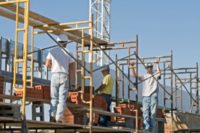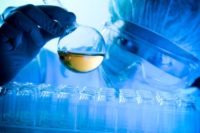 An explosion during a chemistry class science experiment last week sent two students from a Manhattan high school to the hospital with burns to their face, hands and neck. One of them, 16-year-old Alonzo Yanes, is in critical condition in the burn unit of a local hospital. The other sustained first degree burns.
An explosion during a chemistry class science experiment last week sent two students from a Manhattan high school to the hospital with burns to their face, hands and neck. One of them, 16-year-old Alonzo Yanes, is in critical condition in the burn unit of a local hospital. The other sustained first degree burns.
The U.S. Chemical Safety Board (CSB), which investigates chemical accidents, expressed frustration over the incident, which was similar to a high school lab accident in 2006 that was highlighted in a CSB video safety message. Entitled “After the Rainbow,” – a reference to the name of the experiment at the center of both incidents – the video features accident survivor Calais Weber in her own words describing how at age 15 she was burned over 40 per cent of her body during a chemistry demonstration performed by her teacher at a prestigious boarding school she attended in Ohio.
The two are among at least seven investigated by the CSB, which says its chemical investigation screening process “regrettably regularly reports similar accidents.”
Similar incidents resulting in burn injuries occurred in a Texas middle school in 2013 and a Seattle high school in 2004.
Erupted in a flame
Sources report that in the New York case, about 30 students watched as their science teacher used methanol as an accelerant to burn dishes of different minerals in a chemistry demonstration known as the Rainbow, which results in a visual display of how different substances produce flames of different colors because of their varying properties. The chemical interaction erupted in a flame which traveled rapidly through the room, injuring Yanes and a 16-year-old girl.
The demonstration in the CSB video showed the use of a highly flammable methanol to depict how various mineral salts produce different color flames when burned.
So much taken away from you
CSB Chairperson Rafael Moure-Eraso said the incident is “yet another example of a preventable incident and a reminder of the need for exacting safety measures to protect students and school property. As Calais states in the safety message, her accident should never have occurred, and that with better attention to good safety practices, similar accidents can also be avoided. She says, 'It feels with this type of injury that you’ve had so much taken away from you unnecessarily and to keep reading about other people who have had very similar experiences, it’s tragic and shouldn’t happen.’
Moure-Eraso did not, in his statement, call for banning the Rainbow experiment in classrooms.
Click here to view the CSB safety message. LINK TO CSB SAFETY MESSAGE: http://www.csb.gov/videos/

